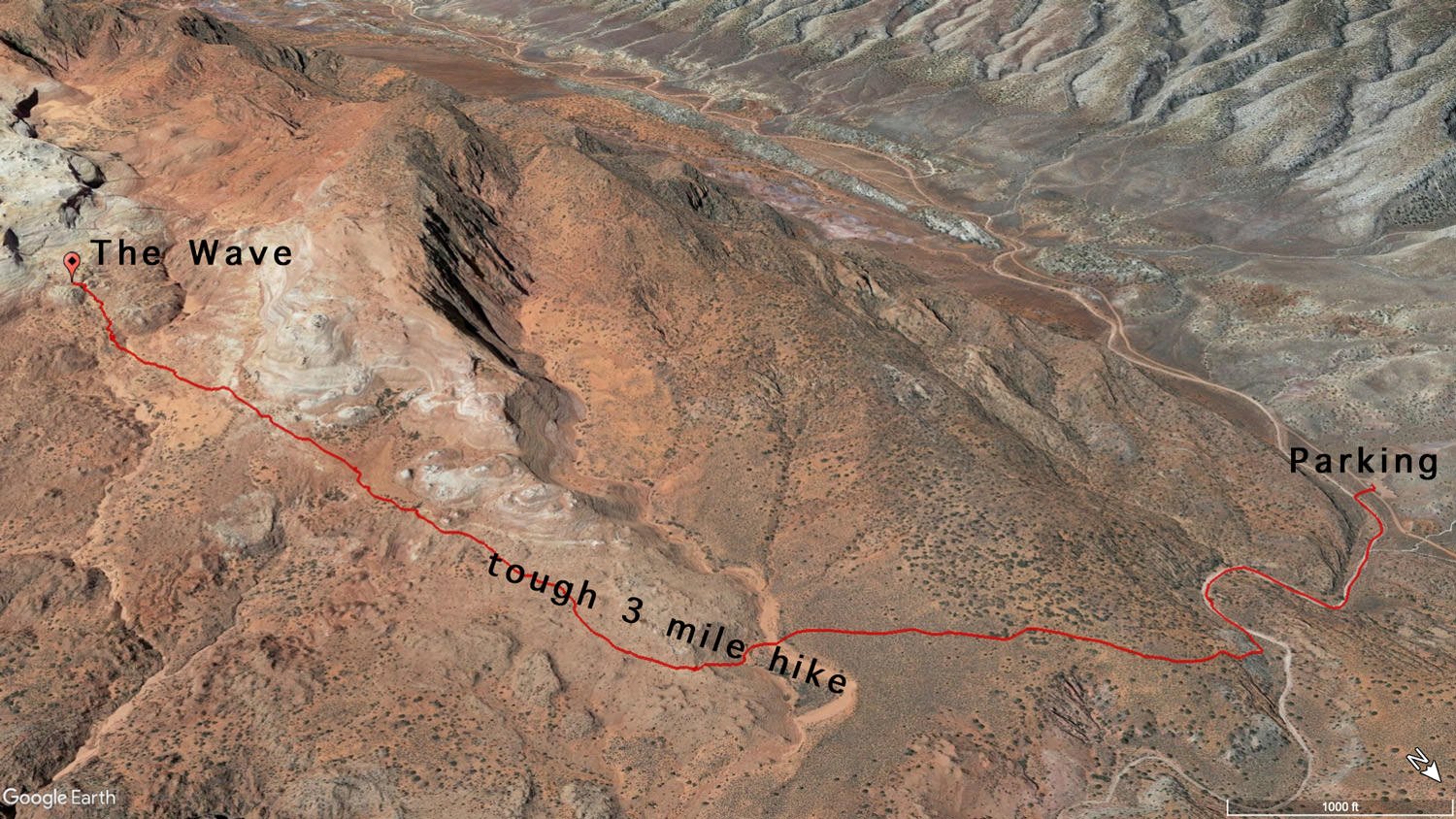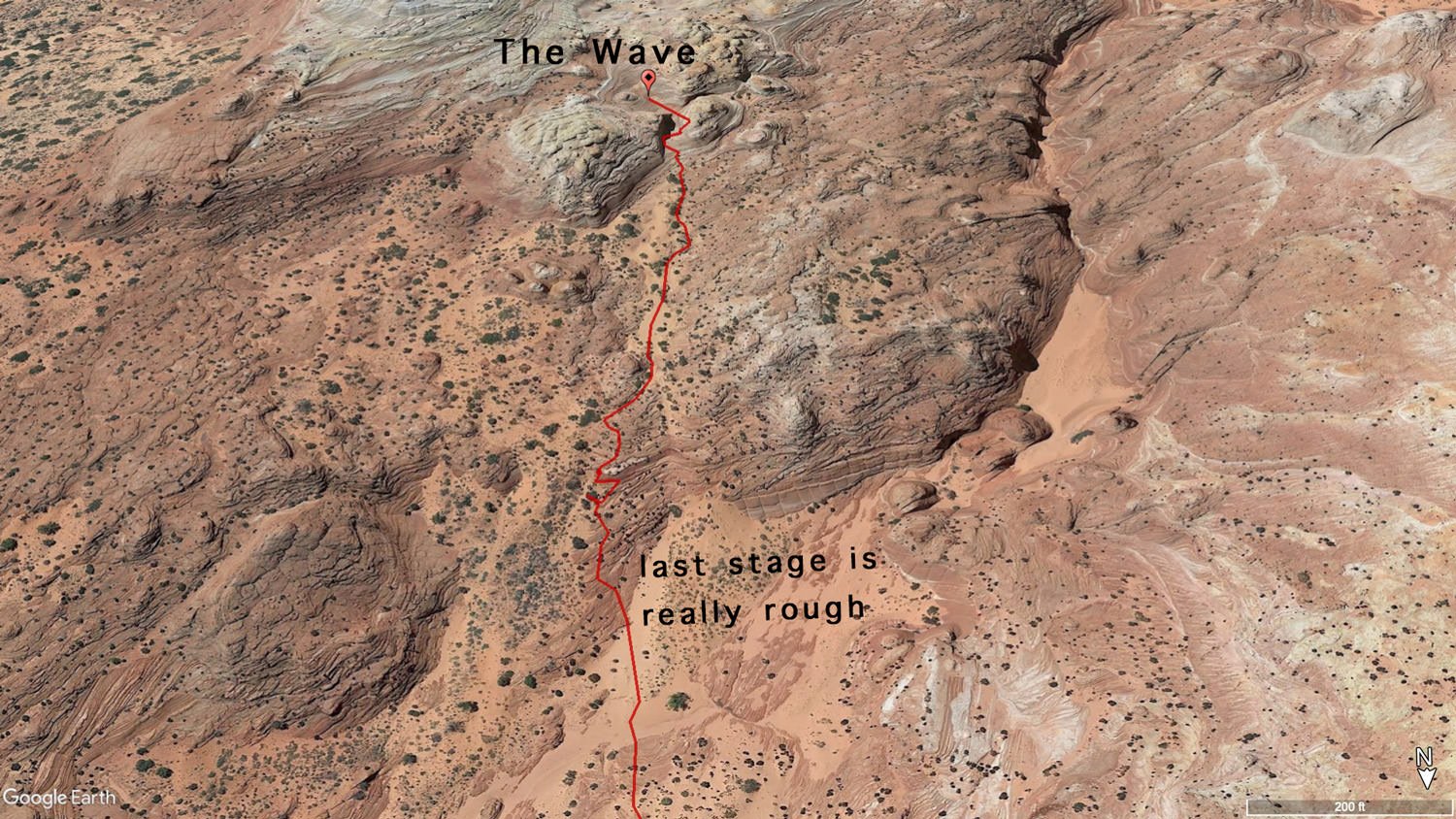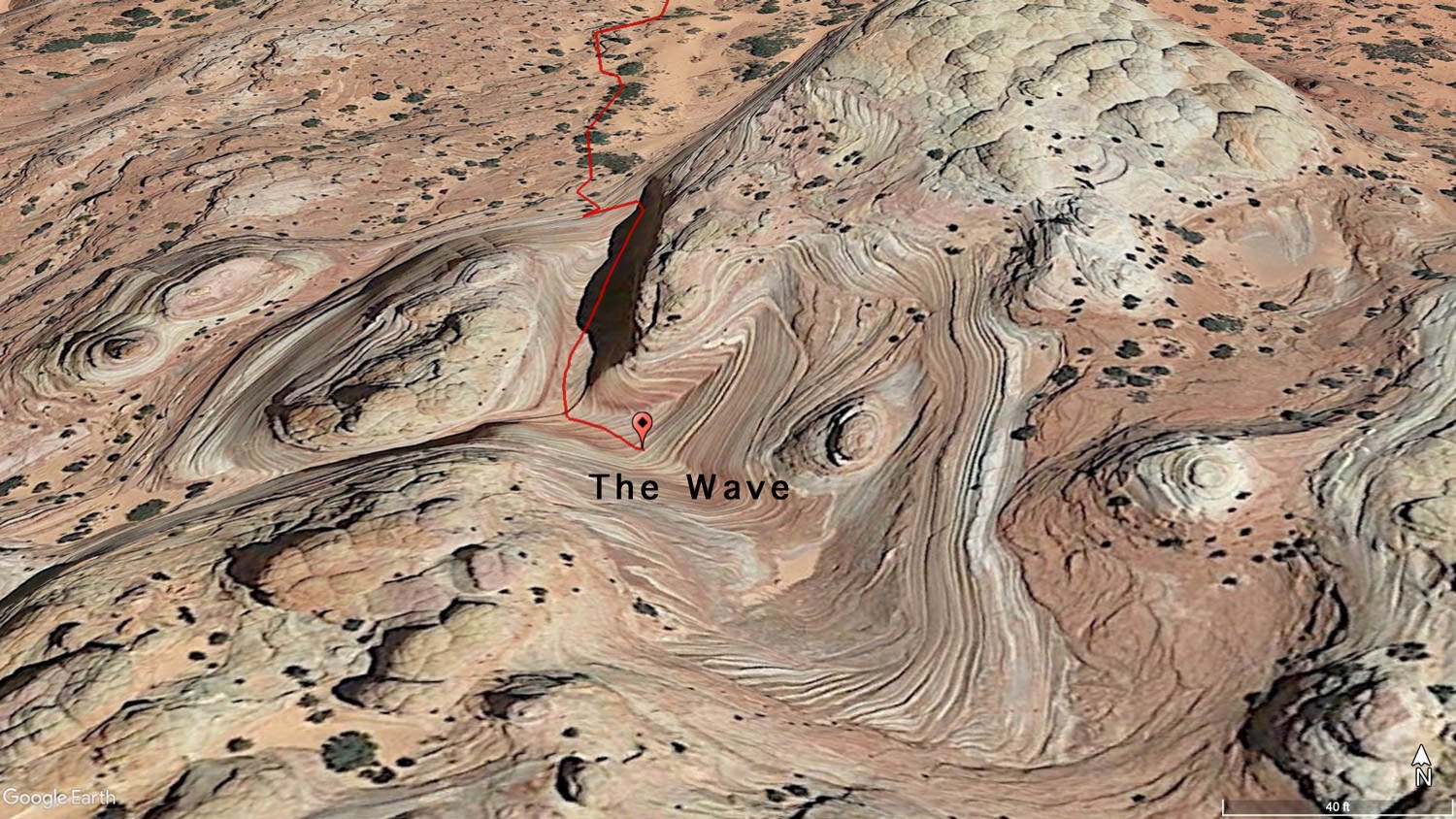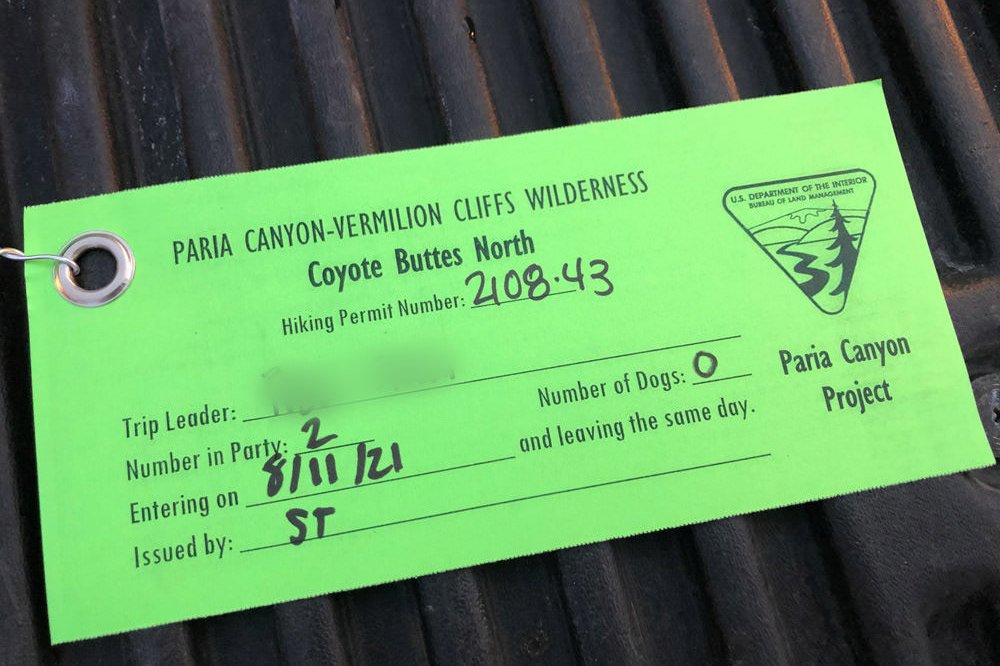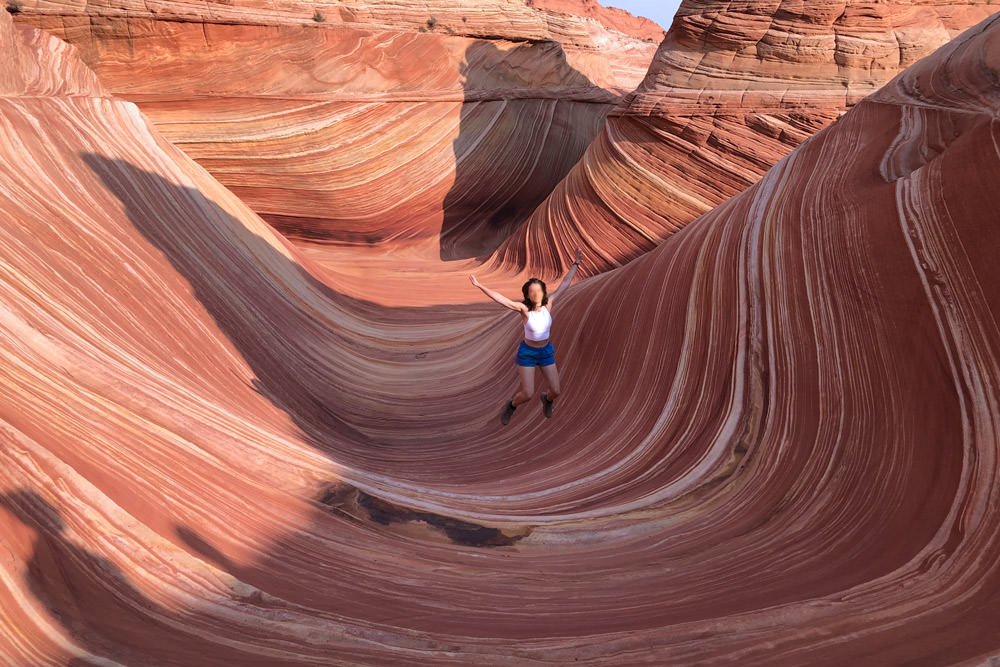The Wave
THE WAVE
Coyote Buttes North, AZ
The Wave is one of the most intriguing and sought-after locations to visit and photograph in the American Southwest. And for good reason, this natural wonder is truly unique and like no other place in the world.
I have visited many fascinating places in my life, but only a few are as mesmerizing as this little sandstone bowl in the middle of nowhere. When you first arrive at the Wave, you will spend several minutes taking in the wonder of the place, trying to reconcile how it ever came to be. And the memory of the many times you tried to get a permit, the cost and effort of the trip, and the butt-kicker of a hike it took to get there are washed away.
And yes, it’s spectacular!
There are hundreds of articles, videos, and websites documenting the journey and what is needed to get to The Wave. This summary is focused on photographing this once-in-a-lifetime opportunity.
The Wave and the sandstone rock formations are delicate and fragile and receives many visitors each year. I would ask that when you visit, please do your best to preserve all aspects of this location for future visitors and always try to leave it in better shape than when you found it.
Images and location summary by Tim Wier
Trail Difficulty - HARD
I would rate the difficulty of this trail as a 4.5 on a scale of 1-5 (with 5 being the most difficult).
The drive to the Wave parking area on Houserock road from HWY 89 is bumpy, sandy, and can be impassable when wet but can be made in most vehicles (when dry).
The trail to the Wave is roughly 3 miles each way (6 miles round trip) + the extra walking in and around the other locations at Coyote Buttes North. However, this is no walk around the neighborhood. The hike to the Wave is HARD as you will be going uphill/downhill 5 or 6 times (with large elevation gains), walk through deep sand and hiking on uneven, steep and slanting slick rock for much of the trip. And the last leg of the hike (just before getting to the entrance to the Wave) is the most challenging part - with a nasty 45 degree uphill hike in DEEP sand. This hike is not for everyone and should not be attempted unless you are in good shape.
The majority of the hike is totally exposed, with very few places to hide from the sun. When taking this trip in the Summer, make sure you have at least 3-4 quarts of water, snacks, and head covering. Timing for the hike is between 1 1/2 to 2 hours each way (depending on your pace). The BLM placed several signs/markers on the pathway- but you can still get lost and disoriented, so I strongly suggest downloading a KML file to the Wave and using GPS tracking software to stay on the trail.
Once you finish the hike, you will be worn out, exhausted, triumphant, and feel like you have achieved a mental "badge of honor."
GPS Coordinates & Elevation
5,210 Ft. Elevation
Google Earth
Download KMZ Trail File
Click Here to download the KMZ file for this location.
Directions
CLICK HERE to get driving directions to the Wave (Wirepass Trailhead) parking area
From Kanab, UT - drive East on US-89 for approximately 40 miles until you see an easily missed sign on the right for House Rock Valley Rd. Take the House Rock Valley Rd for 10.3 miles (crossing into Arizona just before the parking area), where you will see a very large parking area on the right.
From the parking area, cross the road heading east and follow your KMZ/GPS trail or use the map with pictures provided by the BLM office to find the Wave. The hike will take between 1 1/2 to 2 hours each way (depending on your pace). Again, you can easily get lost and disoriented, so I strongly suggest downloading the KML file and using GPS tracking software to stay on the trail.
From Page, AZ - drive West on US-89 for approximately 34 miles until you see an easily missed sign on the left (just past a sharp bend in the road) for House Rock Valley Rd. Take the House Rock Valley Rd for 10.3 miles (crossing into Arizona just before the parking area), where you will see a very large parking area on the right.
Photography Tips
Before describing the nuances of photographing The Wave - let me first define a few terms, locations, and other points of interest:
Coyote Buttes North is part of the Paria Canyon-Vermilion Cliffs Wilderness, and has some of the most visually striking geologic sandstone formations in the world, including The Wave.
The Wave - is a small bowl-shaped area of colorful and twisted sandstone strata which has the appearance of rolling waves. Many people refer to the whole area of Coyote Buttes North as The Wave. However, I am speaking of just the unique sandstone bowl area (see image).
Looking South - is just past the entrance to the Wave. This is the first formation you encounter when finishing the exhausting hike from the parking lot. This is a wonderful photographic opportunity when water is present.
The Wave Slot - is the small, slotted area found on the right side just after passing the entrance to the Wave. This area is only about 15 yds long but can provide incredible light and fascinating abstracts in the early summer mornings.
Classic Wave shot - is taken from the south side of The Wave facing back toward the entrance (you will be facing northwest). Don't worry; you can't miss this location! The distance from the entrance to the top of The Wave is only about 50 yds.
VERY IMPORTANT - Time of Day The Wave is technically in Arizona. However, the parking area and most of the hike are in Utah. Currently, most of Arizona DOES NOT observe daylight savings time. If you are visiting The Wave during Daylight Savings time and want to arrive at a certain time, make sure you coordinate your time of arrival with the time in Arizona. Don't let this nuance mess up the timing of your shot.
Photographing The Wave - there are many photographic options available at The Wave - some depend on the time of year and the time of day you visit (also if there is water in the Wave).
Photographing the Classic Wave
If you are looking for the classic Wave shot, this is pretty straightforward. Simply walk through the entrance to the backside (southside) of the Wave. Find your composition by walking in and around the bowl and wait for the right light. The Wave is surrounded by 20 - 30 ft tall wavy sandstone rock formations, which cast shadows in the bowl area until the sun is directly overhead. If you are looking for a shot without shadows, it happens in the middle of the day.
This shot is taken with a 17mm equivalent lens about 3 hours after sunrise in August.
There are several nice abstracts to photograph from the classic Wave location. Just take your time and look around. Try to find different and unique formations, lines, and textures. ALSO, BE AWARE OF THE SHADOWS as they will add or subtract from your compositions.
The main image above was taken from this spot about one and half hours after sunrise in August. If I had it to do over again, I would arrive before sunrise and catch the first light on the upper left (before the left side receives light).
Photographing Looking South
During the Summer months, the back wall of this composition receives harsh light as soon as the sun crest the horizon (while the right and left sides are still in shadow). Once the sun hits the back wall, the shot is blown out. This means the best time to take this shot is before sunrise (or on an overcast day).
Water in the Wave - if you are lucky enough to visit the Wave with water in the bowl, it opens many new options. One of my personal favorite images of the American Southwest is Jack Dykinga's masterpiece "Stone Canyon." From the stories I have ready, this image was taken on Jack's 6th attempt at the Wave in the Summer of 1992. He tells of driving all night from Salt Lake after seeing a big storm hitting the area. Then hiking 3 miles carrying his heavy 4x5 view camera in the dark to make sure he arrived to capture the perfectly calm water at first light. This shot is taken facing south at the entrance of the Wave just before sunrise.
If there is water in the entrance and you want to get a nice reflection, it is best to be the first person at the Wave, as wet footprints from others walking through the water will show up in your shot.
Photographing The Wave Slot
Just past the entrance - before you get to the Wave, is a little slot area on the right with incredible reflective light in the early mornings. The colors are brilliant, and the curves are magical. Spend some time in this little area to capture some unique abstracts like this nice image by Rob Strain.
In the slot, you will want to shoot wide and low to capture this image. This image was taken about 2 hours after sunrise in August.
There are many other great photographic opportunities in this small and wonderful location. If you have time, walk around the area and visit the Dinosaur Tracks, The Boneyard, Sand Cove, and the Second Wave. The Second Wave is a great shot but is best photographed in the late afternoon and best in the Winter months.
Astrophotography - the Wave is also a great place for astrophotography. Far from any towns or light pollution, the formations make great foregrounds and interesting compositions. The same location as the Stone Canyon is taken is a great place for including the Milky Way as it faces south.
In the late spring, Summer, and early Fall - the sun rises more to the east, which makes it an excellent time to photograph early morning (the first hour or so after sunrise). In the first hour or so, the lower back wall of the Wave will be illuminated for a nice classic Wave shot, and it is also a nice time to photograph the Wave Slot with soft reflective light.
During the late Fall, Winter, and early spring - the sun rises more to the south and throws shadows on much of the Wave until mid-morning.
EXIF Data
Focal Length – 17 mm
Exposure – 125th sec @ f 8.0
ISO – 100
Date – Aug 11th
Time – 8:40 am
Best Time of Day to Shoot
The best time of the day depends on when you are visiting and what you want to photograph. The Wave bowl is surrounded by rolling mounds /hills, which are about 20-30 ft high. Unless the sun is directly overhead, there will be shadows in the Wave.
So, if you want to photograph the classic Wave shot without shadows, it is best to photograph in the middle of the day (in the Summer months). In the Winter months, the bowl is without shadows for only about an hour, so I would arrive mid-morning to early afternoon.
If you are shooting the Looking South view, it is best to arrive before sunrise. The Wave Slot is best photographed in the early morning before the sun gets overhead.
Best Time of Year
The Wave can be photographed any time of year.
Summers temperatures can be extreme, but permits are easier to come by. Spring and Fall are nice times to visit, but permits are harder to come by. Winter would be the least favorable time to photography as the patterns may be covered by snow, hiking may be difficult, the sun rises behind the Wave bowl, and the permits are harder to get.
If you go in the Summer, I would strongly suggest starting out VERY early (1-2 hours before sunrise), so you can arrive with the nice side light entering the Wave, and you can avoid much of the heat.
Lens(es) Needed
As mentioned, the hike is difficult, so you want to pack as little as possible. If you are planning to shoot the classic Wave shot, you will need an ultra-wide-angle lens (14-20mm). However, if you are going to shoot abstracts and wave formations, you will need a standard to a wide-angle lens (24- 50mm lens)
When I went, I only took my 17mm lens to save weight. The main shot at the top of the page was cropped from a 17mm prime lens - so the composition would require about a 35mm lens. If you can only take one lens, I would suggest a 16-35mm zoom.
Birds-Eye View From Google Earth Pro
Permits
The Golden Ticket…
To visit the Wave, you will need a permit for the Coyote Buttes North. Recently, the BLM has expanded the number of daily permits to 64 people or 16 groups, whichever comes first. Online permits for 48 people / 12 groups are issued via the online lottery, and the walk-in lottery is for the remaining 16 people / 4 groups.
The best place to obtain practical user information concerning permits for The Wave is Bill Belvin's www.thewave.info. Bill's outstanding website provides the VERY best information on everything "The Wave" and countless other locations in the American Southwest. You should bookmark his website when visiting and photographing The Wave or other locations in the American Southwest.
Online Permits
Click here to visit Bill Belvin's www.thewave.info for information for online permits and signing up. Online permit can be done on the Recreation.gov website.
Daily walk-in lottery
THIS INFORMATION WAS FOUND on Bill Belvin's www.thewave.info.
The daily walk-in lottery (which used to be done the day before the permit at the Kanab recreation center) has now be replaced by an online "Daily Lottery" system run by recreation.gov. You will no longer need to be in Kanab to apply for a next-day permit. Instead, you can apply online two days before your desired entry date. A maximum of four groups / 16 people will be granted permits each day by lottery; no change from current practice. $9 is charged to apply to the lottery. You can only apply once each day. You must be in the general area of Page, Arizona, and Kanab, Utah to apply for the new daily lottery. You must apply by phone or mobile device with GPS enabled; desktop computers cannot apply. A detailed map showing the boundaries of the area in which you can apply can be found on Bill Belvin's permits webpage. Apply on recreation.gov between 6 AM and 6 PM Utah time, two days before your desired entry date to The Wave. Lottery results will be sent out at 7:15 PM that day. If you win, pay for your permit by 8 AM Utah time the next day. The day before your hike to the Wave, pick up your permit in Page, Arizona, or Kanab, Utah at 8:30 AM local time. Permit pickup locations can be found on Bill Belvin's Permits page
The new "Daily Permit" system is more user-friendly than the old walk-in lottery. You no longer need to be present in Kanab at 9:00 AM the day before you wish to hike to The Wave. You only need to be in the general area of Page and Kanab. You can go out for an early morning photoshoot or sleep in if you wish. There is one downside; there is now a $9 per group fee to enter the lottery. It used to be free.
Direction of the Shot
The approximate direction of the classic Wave shot is Southwest around 315°.
Equipment Needed
The less equipment you take, the easier your hike will be! With that being said, there is no running back to the car to get something you forgot. Make a list of the most important items and carry only what you need.
Most likely, in the Summer the heaviest item you will take will be water/liquids (which weigh 8 lbs per gallon). So unless you want to carry 25 pounds for this really arduous hike in the summer sun, you will want to limit your photography equipment to the bare minimum. Fall/Spring changes things a bit, but you get the point.
If possible, try to limit your equipment to one or two lenses. Carrying a tripod is debatable. Unless you are shooting at first or last light, you will most likely NOT need a tripod. However, if you are going to focus stack or exposure blend - you will need a tripod (if you have a lightweight tripod, that would be preferred). My recommendation would be to bring a 16-35mm and/or a 24-70mm lens without a tripod. You might consider a polarizing filter to help with the harsh lighting.
VERY IMPORTANT - try to bring a small dust broom to sweep away debris and sand. These small brooms are light and don't take up much space, and can save you tons of time in post-processing.
Non photography equipment - head covering (large floppy hat is great), sun screen, chap stick, snacks, trail bars and plenty of liquids.
Number of Other Photographers to Expect
The Coyote Butte North has a limited number of visitors each day. However, the Wave bowl is relatively small and can get a bit crowded at times. No worries, as the formations are not going anywhere, and you will have plenty of time to shoot your compositions.
Weather
The Wave is a high desert climate where temperatures can vary up to 30° in a day. Spring and Fall are nice, but Summer can get into the 100's. The monsoon season (in late Summer) can bring violent but brief thunderstorms.
Cell Service
I use Verizon, and I could not get cell service at the Wave. If you get lost, you might get cell service by climbing one of the large hills in the area.
Overnight Camping Options
The closest towns with lodging are Kanab, UT (50 miles - 1 hour 30 minutes to the west) and Page, AZ (45 miles - 1 hour 15 minutes east).
There are no campsites at the Wave, but there is a nice little campsite called Stateline Campground - about 2 miles south of the Wave parking lot (on House Rock Valley Rd). The campsite has about 7-8 camping spots, free to the public, and has clean public restrooms.
Nearby Restaurants
The closest towns with lodging are Kanab, UT (50 miles - 1 hour 30 minutes to the west) and Page, AZ (45 miles - 1 hour 15 minutes east). There are NO WATER RESOURCES whatsoever in or around the Wave.
Area Guides and Workshops
None
Other Resources
The very best information on EVERYTHING the Wave can be found at Bill Belvin’s www.thewave.info website.













